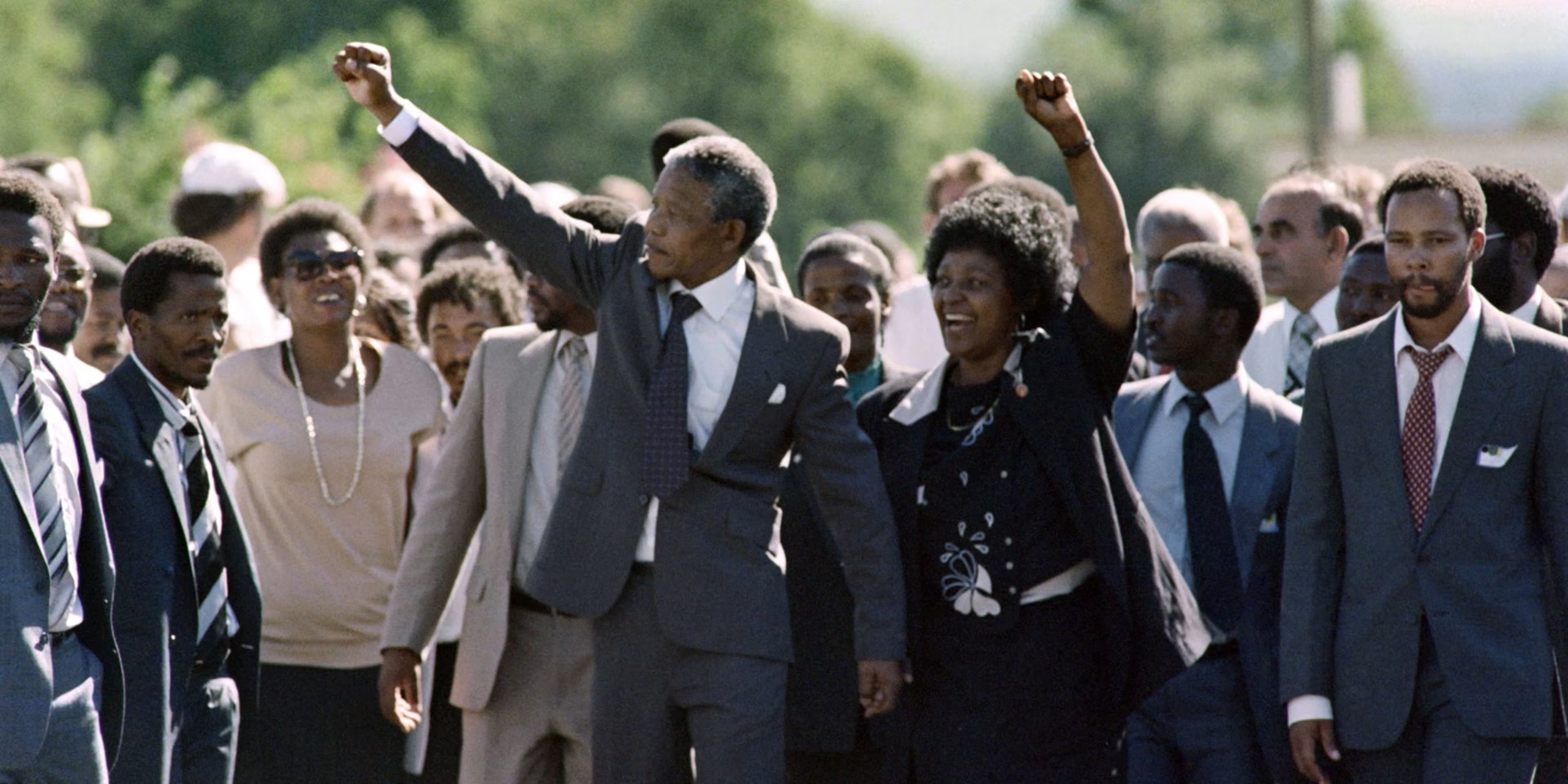How Mandela Earned—and Gave Away—His Fortune
At the time of his death on December 5, 2013, Nelson Mandela, South Africa’s anti-apartheid icon, president, and global peace advocate, had a personal net worth of roughly $1 million.
That number may seem small by celebrity or political standards, but in Mandela’s case, it told only a fraction of the story.
Born on July 18, 1918, Mandela made most of his money later in life—through royalties from his bestselling autobiography Long Walk to Freedom, as well as honoraria for international speaking appearances and private donations tied to his post-presidential foundations.
But Mandela didn’t live like a millionaire. He made a deliberate choice to donate much of his earnings—funding children’s hospitals, rural schools, and public health programs across South Africa.
For Mandela, wealth was never the goal. His estate, in monetary terms, was modest. But in terms of purpose, it was vast.
Though he led a nation and became a global moral compass, Mandela avoided materialism. Instead of building personal wealth, he built trust—literally and figuratively.
Royalties, Speaking Fees, and Quiet Support from Friends

On Feb 11, 1990, Nelson Mandela walked free after 27 years in prison, holding hands with his then-wife Winnie outside Victor Verster Prison.
Mandela never sought riches. His income grew mainly in the years after his 1990 release from prison, when the world clamored to hear his story and support his vision. His memoir, Long Walk to Freedom, became a global bestseller—translated into dozens of languages and selling over six million copies.
The royalties from that book formed the core of his financial portfolio.
Occasionally, Mandela accepted speaking fees from NGOs, universities, and global forums, where he addressed issues like peace, justice, and post-colonial healing.
The money helped, sure—but most of it didn’t stay with him for long. He funneled much of it into education programs, youth scholarships, and trust funds.
Some private benefactors also stepped in quietly. Insurance mogul Douw Steyn, for example, covered some of Mandela’s housing and logistical expenses, allowing him to live with dignity without dipping into state funds or selling out his image.
Rather than take brand endorsements or commercial partnerships—which he was frequently offered—Mandela held firm. His name wasn’t for sale.
A Purpose-Driven Estate and Legacy
After his passing, court documents revealed that Mandela’s estate was provisionally valued at around 46 million South African rand—roughly $4.1 million at the time. That figure included tangible assets like homes and furnishings, but also intangible ones: royalties, archival materials, intellectual property.
The liquid portion was relatively modest; most of the estate’s value was locked up in trusts.
He’d thought carefully about how it would all be distributed. His estate was divided among three main pillars:
-
The Mandela Family Trust, supporting his children, grandchildren, and great-grandchildren—over 30 descendants in total.
-
Educational Trusts, aimed at providing scholarships and bursaries at schools and universities he’d supported or attended, including Fort Hare, Wits, and schools in Qunu.
-
The Nelson Mandela Foundation, which carried forward his legacy of social justice, peace-building, and historical preservation.
Even his staff didn’t go forgotten. His personal assistant Zelda la Grange and other long-serving aides each received 50,000 rand. His children, too, had received $300,000 in lifetime loans—wiped clean upon his death.
His widow, Graça Machel, had legal rights to half the estate. But in a gesture that stunned even Mandela’s close allies, she voluntarily waived her claim, choosing unity over entitlement.
The Real Value of a Life
Mandela came from royalty—born into the Thembu clan in the tiny village of Mvezo. After his father’s death, he was adopted by a local chief and raised in the halls of traditional leadership.
He studied at Fort Hare University and later UNISA and Wits, where he trained as a lawyer—one of the few Black professionals in apartheid-era South Africa.
But it was politics that would define his path. From the 1940s on, Mandela became a thorn in the side of South Africa’s apartheid regime.
He co-founded the ANC Youth League, organized protests, and later led the armed wing of the movement. In 1962, he was arrested and sentenced to life in prison.
After 27 years—most spent on Robben Island—Mandela walked free in 1990. Four years later, he became South Africa’s first Black president.
During his presidency (1994–1999), Mandela emphasized national healing, reconciliation, and steady economic policy. He resisted the temptation of a second term.
When he stepped down, he didn’t retreat into luxury or wealth-building. Instead, he threw himself into philanthropic work—fighting HIV/AIDS, funding rural development, and promoting peace around the world.
By the time he passed away, Mandela had become a global symbol of humility. He wore simple clothes, drove modest cars, and reminded people that power and money were fleeting.
His financial philosophy was simple: “Money should never define a man.”
People Also Ask
What was Nelson Mandela jailed for?
He was imprisoned for sabotage and attempting to overthrow the apartheid regime, due to his leadership in the ANC’s armed resistance.
How did Nelson Mandela make his money?
Primarily through royalties from Long Walk to Freedom, speaking engagements, and stipends tied to his foundation work.
Why is Nelson Mandela admired around the world?
For leading South Africa’s peaceful transition out of apartheid, refusing vengeance, and dedicating his life to justice and unity.
Did Mandela give away his wealth?
Yes—he donated large portions of it to educational and charitable causes throughout his life and even after death through structured trusts.
What is the Mandela Effect and is it related to him?
Not really. The “Mandela Effect” refers to collective false memories—like the mistaken belief that Mandela died in prison. It’s a pop-culture phenomenon unrelated to his real life.